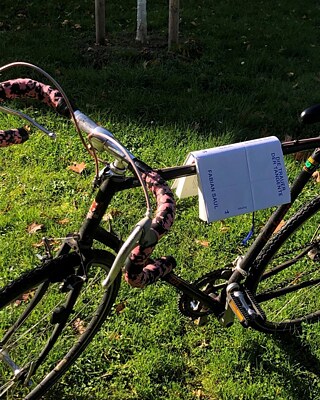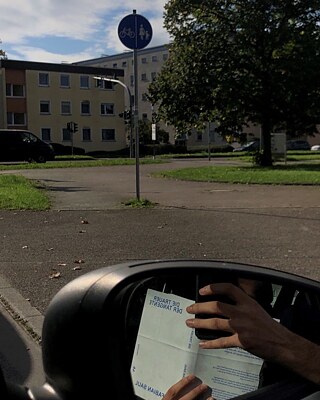Book review #13
Armin reads 'Die Trauer der Tangente'
Armin discovers a story he will carry with him in Fabian Saul’s debut novel Die Trauer der Tangente. Find out why in his latest review for #Vorzeichen.
Fabian Saul’s debut novel Die Trauer der Tangente is deeply moving. Saul’s text has an utterly unique way of combining form, setting, interactions, and characters, as though an entire group of close friends were speaking to you all at once. The conversation may at times grow muddled, but each individual contribution makes sense in the context of the words that both precede and follow after them. In combination, their voices form a rhythmic narrative, the margins of the book remind us in the fine print of where we are. What is this book about? The story permits multiple levels of interpretation and resists a standard narrative. The text speaks rather to the attempt to capture distance. The attempt to locate a beginning. The attempt to do right by one’s love for the dying.
From a different angle:
»I had researched everything, found settings where one place lay within another, spaces where they ended and began, places that were colder than expected, places where the story started, places where pain lay. I arranged it all and then let it be. I lay my rosy cheek against the table and closed my eyes. And the images returned to me.« (p. 78)
Perhaps Fabian Saul’s novel is about not escaping the pain, but holding onto it and pushing through. Saul reminds us that the violence of places are connected and histories are not linear. From Berlin to Beirut and Lagos, Saul manages to develop a coherent narrative out of diverse interactions, cartographies, anecdotes, and quotes from famous thinkers. He creates his own narrative chronology through rewrites and repetition; Die Trauer der Tangente demands an entirely new reading style in which I endeavor to weave my own beginnings. A book that will accompany me for a long while.
From a different angle:
»I had researched everything, found settings where one place lay within another, spaces where they ended and began, places that were colder than expected, places where the story started, places where pain lay. I arranged it all and then let it be. I lay my rosy cheek against the table and closed my eyes. And the images returned to me.« (p. 78)
Perhaps Fabian Saul’s novel is about not escaping the pain, but holding onto it and pushing through. Saul reminds us that the violence of places are connected and histories are not linear. From Berlin to Beirut and Lagos, Saul manages to develop a coherent narrative out of diverse interactions, cartographies, anecdotes, and quotes from famous thinkers. He creates his own narrative chronology through rewrites and repetition; Die Trauer der Tangente demands an entirely new reading style in which I endeavor to weave my own beginnings. A book that will accompany me for a long while.





